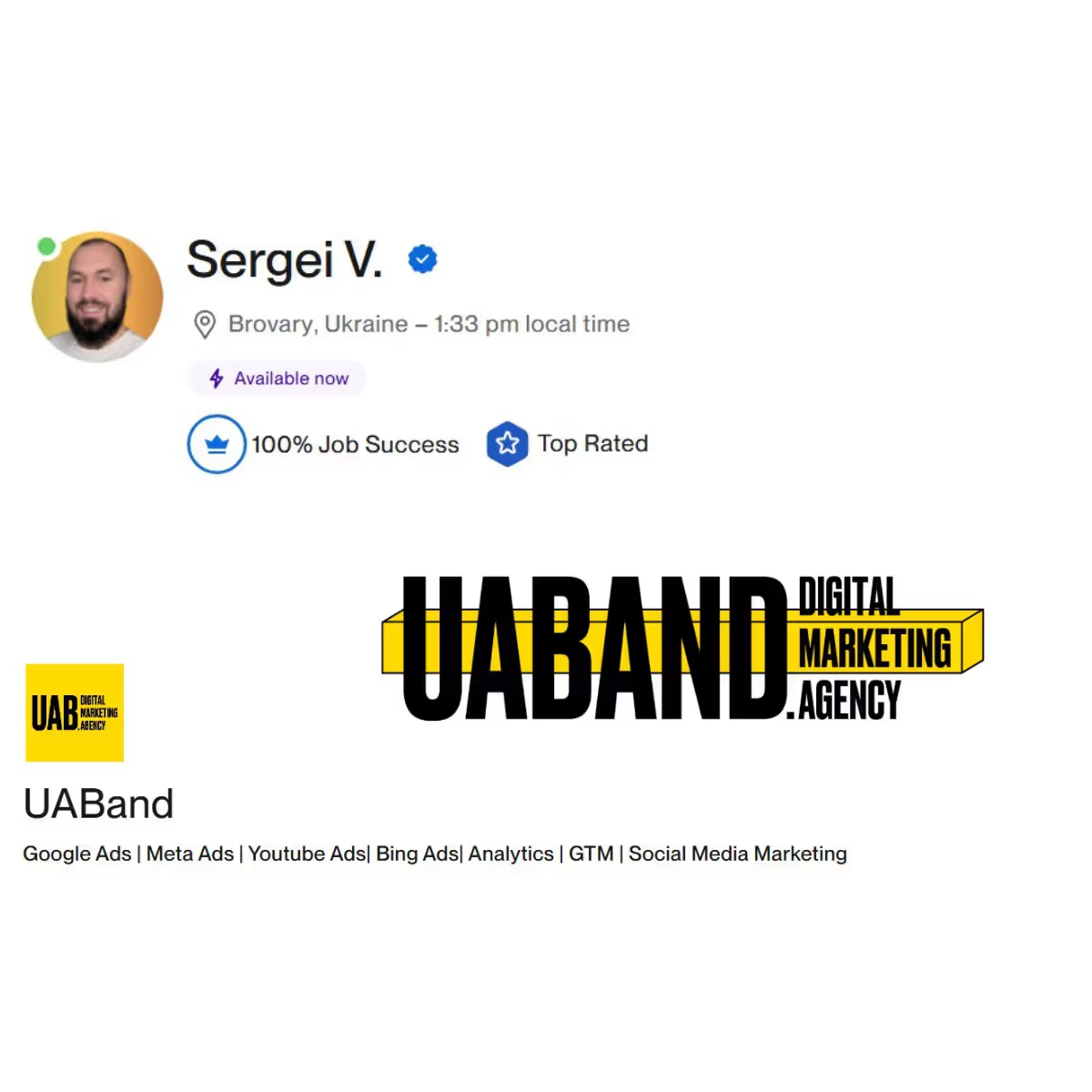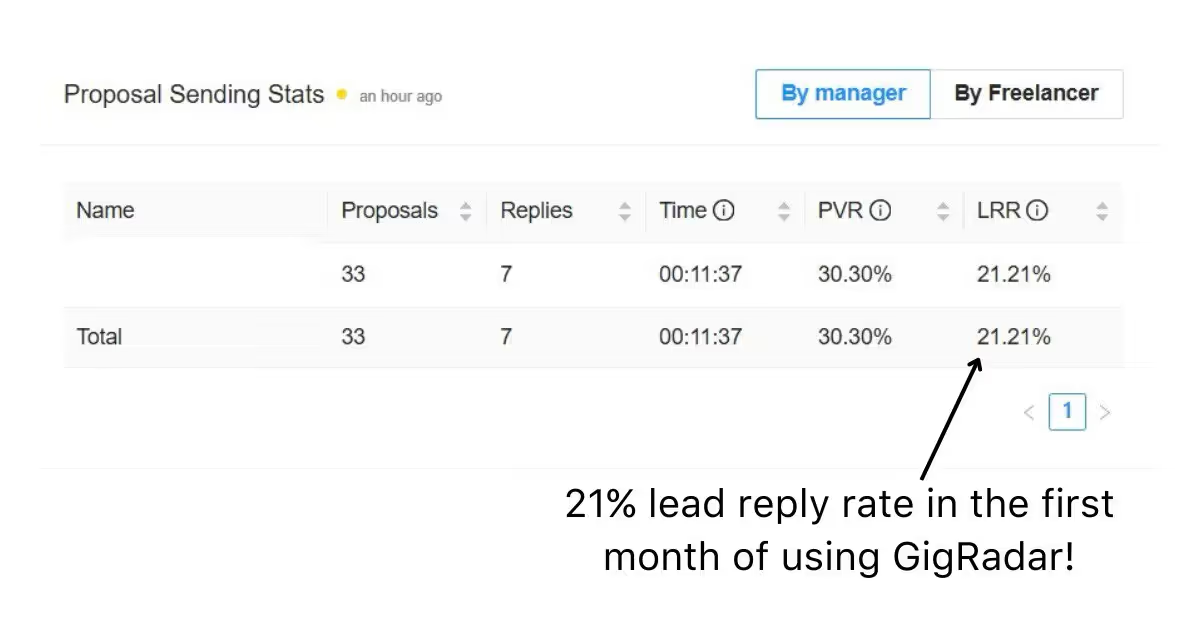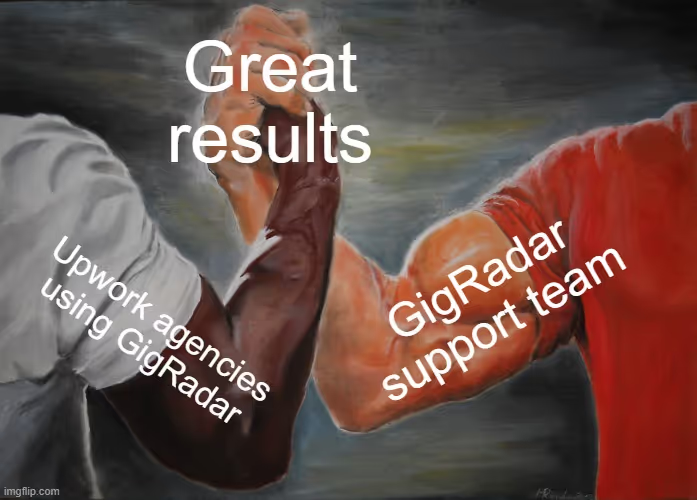
Before GigRadar
Before discovering GigRadar, this Ukrainian performance-based ad agency, focused on Google, Meta, and social media advertising, was already well-established in its market. With a team of 19 people, 16 focused on PPC and targeting, and 3 handling social media marketing, the agency had built a reputation for professionalism and results-driven campaigns. Yet, even with a strong foundation and demand from international clients, scaling efficiently remained a challenge.

Daniil Berkelia, the business and sales manager, who joined the company seven months ago, quickly found himself at the heart of the agency’s client acquisition efforts. One of his biggest hurdles was managing the time-consuming process of lead generation, especially on Upwork, their primary client acquisition channel.
Manual Bidding, Fierce Competition, and Time Lost
Upwork was both an opportunity and a source of frustration. The team had success there, but every new lead came at a high cost, not in money, but in time. Each day, Daniil would spend three to four hours writing ten customized bids. This process was necessary to stand out, but it wasn’t sustainable. Every client required a different communication style, a different level of pressure, and a different rhythm.
With some clients, you need to say ‘let’s jump on a call right now.’ With others, you have to move more slowly. It’s different every time.
Compounding the issue was the intense competition on the platform. Many freelancers were promising quick, unrealistic results at very low prices, something the agency refused to do. Their approach was honest and data-driven, which they knew set them apart, but it also made the sales cycle longer and more difficult.
We’re professionals, and when we talk to clients, we explain that ads aren’t math, there’s no guaranteed outcome. But others would promise results overnight, and for less money. It was hard to compete with that kind of messaging.
.avif)
Outside of Upwork, the agency explored other channels. Telegram bots, for instance, were a cost-effective way to get access to potential clients, providing 100–200 leads per month for just $30. However, conversion remained low due to pricing differences between their international service rates and the expectations of local Ukrainian clients. Word-of-mouth referrals, by contrast, were incredibly effective, described by the team as “10 out of 10” in terms of client quality, but they couldn’t rely on referrals alone if they wanted to scale.
Searching for a Smarter System
When the agency decided to build a dedicated sales department six months ago, they brought on a freelance sales consultant with a strong reputation in the Ukrainian market. This consultant had previously helped another agency scale using a tool called GigRadar, and immediately recommended it.
They didn’t hesitate. With no prior experience using similar platforms, the team was open to trying something new, especially with a trusted recommendation backing it.
From Manual to Managed
The biggest and most immediate impact GigRadar had was in reclaiming time. Instead of spending 4 hours each day manually crafting bids, Daniil could now delegate the process to automated scanners.
I saved a lot of time and could spend it on other things. It’s really awesome.
Setting up the system wasn’t completely effortless, and that was expected. The first month didn’t generate much in terms of results, largely because the scanners weren’t yet fully optimized. But as soon as they fine-tuned their filters, specifying countries, budget ranges, keywords, and excluding irrelevant projects. Everything changed.
It started working great only in the second or third month after we fixed everything: minus words, plus words, countries. But when it’s optimized, it saves your time, and time is money.
As a result of that optimization, the agency started seeing tangible results. In just a two months of using GigRadar, they closed four new clients and were in contract negotiations with two to three more. The investment in GigRadar paid off within the first month.

Depending on their pricing and client size, this translated to an estimated $4,800–$5,000 in additional revenue per month directly from GigRadar-sourced projects. And that’s with just seven bids being sent out per day, a testament to the quality of the targeting and filters they had put in place.
Building on a Strong Foundation
This success wasn’t just due to automation. The agency’s internal strategy, profile, and approach to client communication all played a role. They understood that to convert leads, you need more than a bidding tool. You need strong case studies, a well-prepared profile, and a strategic understanding of client psychology.
Daniil shared advice for others trying to grow on Upwork: always tailor your communication strategy to the number of interviews a job has.
If it has 10 or 15 interviews, you need to push, go to the call now. If it has just one or two, and it’s an invite, you need to stay calm and patient.
He also emphasized that no tool will magically bring in results unless you invest time into setting it up correctly. With GigRadar, the flexibility of scanners makes it powerful, but it’s the optimization that brings ROI.
Spend time on your scanners. Fix everything. And don’t forget, you can reach out to the GigRadar support team for help — they’re really helpful. If you do that, everything will be great.

Automation that Works
GigRadar didn’t just automate the agency’s lead generation. It helped them regain control over their time, focus on strategic work, and win better clients without sacrificing their professional standards.
By shifting from manual to automated bidding, and fine-tuning the system to match their unique positioning, the team achieved exactly what they needed: steady, scalable growth on Upwork without hiring extra people or compromising on quality.
It saved me time, brought us clients, and helped us grow with the team we have.
If you’re an Upwork agency owner looking to save time, close better clients, and build a smarter sales pipeline, GigRadar may be the tool you’ve been missing!


